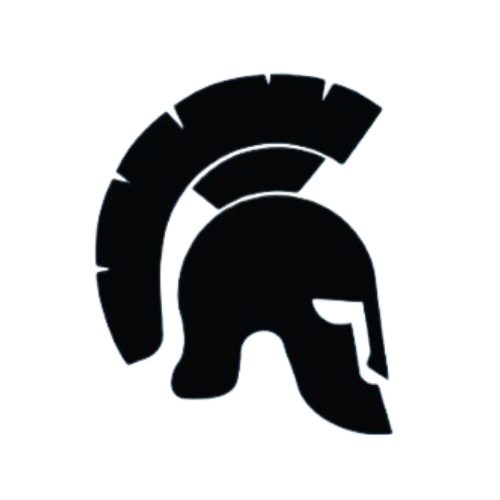You’re feeling the burn. That familiar, aching sensation in your muscles after a tough workout. It’s frustrating, and it leaves you wondering: Is this normal? Is it harmful? What can I do to prevent this feeling? This post will delve into the science behind muscle burn, exploring why it happens, how to manage it, and ultimately, how you can conquer that feeling and keep pushing your fitness journey forward. You’ll learn how to understand the signal your body gives you and avoid injury, maintain your motivation and see results.
That burning sensation in your muscles after a workout, it’s a familiar feeling for many. Whether it’s from a grueling HIIT session, a challenging weightlifting routine, or even a long walk, the discomfort can be discouraging. Some people worry that it’s a sign of injury or overtraining. But fear not! This post will break down the science behind muscle burn and equip you with the knowledge and strategies to manage it effectively. We’ll explore the causes, how to mitigate the discomfort, and provide actionable tips for a successful and safe exercise regime. Understanding your body’s response is crucial to achieving your fitness goals without hindering your progress.
Prepare to discover the secrets behind your post-workout burn, and discover a proactive approach to your exercise routine! Let’s get started.
What is Muscle Burn?
The burning sensation during or after exercise is often described as a feeling of discomfort, tightness, or even pain in the muscles. It’s different from sharp pain, which could indicate injury. This achy feeling can be intense and localized to specific muscle groups that are being exercised. This feeling, often misunderstood, is a common response to intense physical activity. It’s not something to be afraid of, but rather a signal from your body that it’s working hard.
Muscle burn is a common experience, particularly for those engaging in intense or unfamiliar exercise. It’s crucial to understand that it’s generally a healthy response, a sign that your muscles are being challenged and adapting. Recognizing that it is a normal process will give you the confidence to push your limits while staying safe and informed.
While this burning sensation can be uncomfortable, it’s important not to confuse it with actual injury. A burning sensation that is sharp, persistent, or accompanied by swelling or bruising is a different story and requires prompt attention. Always prioritize your safety and consult a healthcare professional if you experience concerning symptoms during or after exercise.
The Science Behind Muscle Soreness: Understanding the Burn
Muscle burn during exercise is a complex process stemming from the body’s response to physical exertion. You need to know that it’s not all about lactic acid, although it does play a role. A workout puts your muscles under a lot of strain, and they respond with some micro-tears. This microscopic damage to muscle fibers is the true beginning of the process, triggering a series of reactions.
While the idea that lactic acid buildup is the sole culprit behind muscle burn is a common misconception, it’s not the primary cause of the burning sensation. While lactic acid contributes to fatigue, the primary drivers behind the discomfort are related to the stress placed on the muscles and the subsequent repair process. Lactic acid is an important factor but it’s not the driving force behind the burning sensation. As the muscles work and are challenged more, the lactic acid increases and may create a burning sensation. However, the key takeaway is to understand that the overall response is more complex.
The process of muscle contraction, particularly during intense exercise, causes microscopic tears in muscle fibers. This is normal and necessary for muscle growth and adaptation. The body’s response to these micro-tears involves inflammation and the recruitment of repair mechanisms. This process releases metabolic byproducts that can contribute to the burning sensation. Understanding this process is crucial to appreciating the fact that this is a positive signal, not a sign of failure.
Causes and Factors Influencing Muscle Burn
A variety of factors contribute to the intensity and duration of muscle burn. The intensity of your workout and how long you exercise are two obvious factors that play a role. As the duration and intensity increase, your muscles have to work harder, causing more micro-tears and leading to a stronger burning sensation.
Different types of exercises target different muscle groups with varying degrees of stress. For example, high-intensity interval training (HIIT) often leads to more pronounced muscle burn than a low-impact activity like walking. This is because HIIT workouts exert a more significant demand on specific muscle groups. Understanding this connection lets you proactively manage your exercises and muscle responses.
Proper warm-up and cool-down routines are crucial for mitigating muscle burn. A good warm-up prepares your muscles for the workout, reducing the risk of injury and potentially minimizing the burn. A thorough cool-down allows your body to return to a resting state, promoting recovery and reducing post-exercise soreness. Your body will thank you, and you will see better results.
Individual factors, such as genetics, fitness level, and hydration, also influence the experience of muscle burn. Individuals with higher fitness levels may experience less intense muscle burn during the same workout compared to someone less fit. Adequate hydration is crucial for optimal muscle function, and proper hydration is essential to help reduce the intensity of the burn. These elements create a varied experience for everyone, making a customized approach to workout sessions essential to prevent injury.
Managing and Preventing Muscle Burn
The duration of muscle burn is largely dependent on the intensity of the workout and individual recovery abilities. Generally, the burning sensation subsides within a few hours to a few days. You’ll get used to this. It’s important to note that individual recovery timelines may vary, so it’s crucial to listen to your body. This is part of the healing process of muscle damage.
Gradual progression is a key strategy for minimizing muscle burn. Gradually increasing the intensity and duration of your workouts allows your muscles to adapt and reduce the risk of excessive micro-tears. This prevents injury and lets you see and maintain results. Consistent and measured increases are a healthier approach compared to sudden and drastic changes.
Proper hydration and nutrition are essential for supporting muscle function and recovery. Drinking enough water before, during, and after your workout helps transport nutrients and remove waste products. Consuming a balanced diet that includes protein, carbohydrates, and healthy fats fuels your muscles and aids repair. Proper nutrition is one of the most important factors to consider for workout recovery and results.
Effective cool-down routines help your body transition from exercise to rest. Light stretching, walking, and other gentle activities aid recovery and reduce muscle stiffness. Your body will thank you for this conscious and careful transition. This active recovery is often underestimated, but it’s as important as the workout itself. Active recovery promotes blood circulation, improves flexibility, and reduces muscle soreness.
Supplements can potentially play a role in muscle recovery, but it’s essential to approach them with caution. Some supplements, such as protein powders, might aid in muscle repair, but their effectiveness can vary significantly. Always consult a healthcare professional before incorporating any supplements into your routine. You should have professional guidance on this issue. Don’t rely on supplements to solve your fitness concerns; rather, incorporate a comprehensive approach, including proper nutrition and a consistent workout regime.
Should You Stop Exercising?
It’s crucial to listen to your body and adjust your workouts accordingly. If the burning sensation is severe or persistent, especially if it’s accompanied by other symptoms, it’s a sign that you might need to reduce intensity or take a break. Rest is essential to healing. It’s important to recognize the signals your body sends you.
If you’re experiencing sharp or unusual pain, swelling, or bruising, stop exercising immediately and consult a healthcare professional. Don’t ignore signs that something is wrong, and prioritize your health and well-being. Proper medical assessment is essential to ensure proper treatment.
Listening to your body is critical for making informed decisions about your workout routine. If you’re unsure about the severity of the burning sensation, take a step back and consult a healthcare professional. This helps you avoid any potential injuries or negative effects, ensuring you proceed safely.
Recovery Strategies
Post-workout recovery strategies are essential for supporting muscle repair and adaptation. This process involves active recovery, and paying attention to nutrition and rest is also a factor. Ensure that you get the rest and recovery that you deserve and need.
A balanced diet rich in protein, carbohydrates, and essential nutrients is crucial for post-workout recovery. Protein aids in muscle repair, while carbohydrates replenish energy stores. Prioritizing a healthy diet helps in faster recovery.
Sufficient rest and quality sleep are critical for muscle repair. During sleep, your body releases growth hormones that support muscle growth and recovery. Enough sleep is crucial for this process. Prioritize your sleep and ensure you get enough rest for better results.
Conclusion
Muscle burn during exercise is a normal response to intense physical activity. Understanding the science behind it and implementing effective strategies can help you manage the discomfort and maximize your workouts. Remember that muscle burn is not an injury. You can adjust your workouts and incorporate active recovery to improve recovery and prevent injuries. Prioritize a balanced approach that includes proper nutrition, sufficient rest, and consistent exercise. By listening to your body and incorporating these strategies into your routine, you can successfully navigate the process of muscle burn and achieve your fitness goals without jeopardizing your health or motivation.
You’ve got this! Continue to engage with exercise, with a healthy attitude and practice. By incorporating these insights, you’ll be well-equipped to navigate the challenges of muscle burn while achieving your fitness goals.
For further information on exercise and fitness, consider exploring resources such as Harvard Health Publishing and Healthline.








